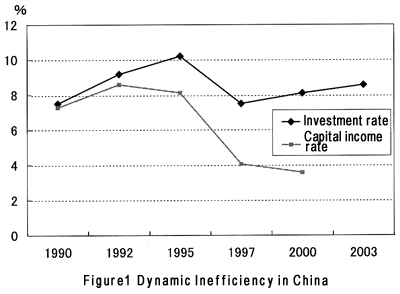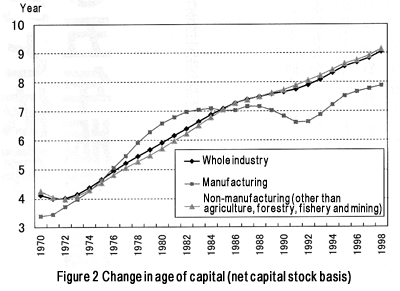The way Japanese people see other Asian nations has changed dramatically over the last decade. By the mid-1990s, the regions of East and Southeast Asia had become the focus of attention as a global growth center. At the time, however, there was a large income disparity in absolute terms between Japan and the rest of Asia. The main issue in Japan was whether Japan's experience could be helpful to the development of Asian countries. In the late 1990s, the issues changed to the hollowing out of the Japanese manufacturing sector and the effects of Asian currency crises on the Japanese economy. There was a need for discussion not only on economic development, but also on international economics and finance. At the beginning of the 21st century, China emerged as a major economic power of the future. Although the Japanese economy has depended on the US economy for a long time, Japan must now pay heed to economic trends in both the United States and China.
The changes in Japan's perceptions of Asia are reflected in this year's White Paper on International Economy and Trade. The White Paper offers a broad and detailed analysis of the changes in Asian countries, especially China and its economy. This analysis covers not only economics but also culture and society. In particular, the report's analyses on the Chinese economy could be termed a "White Paper on China's Economy." Not only China's macroeconomic trends and changes in its trade patterns with Japan but also trends in local economies, regional economic disparities, income disparities, agricultural issues and energy problems are analyzed. Companies doing business with China will no doubt find valuable information in this year's White Paper.
However, the White Paper does not adequately answer the questions of how the Chinese economy will continue to develop and how economic relations between Japan and China will change. Take the problem of overinvestment in China, for example. The White Paper, in Chapter I, analyzes the investment patterns of Japan and South Korea through their high-growth periods and investment trends in various industries. Based upon this historical analysis, it warns that investment in China is overheating. Has investment in China overshot the country's long-term growth path? This type of question can be answered in part, according to Abel, Mankiw, Summers, and Zeckhauser (1989), by comparing investment rates and capital income rates on a balanced growth path. If the former rate exceeds the latter, the level of investment has surpassed the long-term profit rate, and investment is excessive in the sense that allocation of capital to equipment is too large in the long run. For the Chinese economy, these two rates are calculated based on data from the White Paper (Table 1-2-13), Chinese economic statistics, and the input-output table, and are shown in Figure 1. The figure suggests that investment in China has been nearly excessive since around 1995.

Overinvestment is not merely a problem for the real economy; it is also a problem in terms of a reasonable exchange rate for the renminbi. As to the question how the Chinese currency should be reformed, there seems to be a consensus that it should be revalued in some way. The macroeconomic I-S balance suggests, however, that if the current level of investment in China exceeds its long-term growth path, and the high saving rates continue in the future, the exchange rate that generates the current account surplus, that is, the balance of savings and investment should be adjusted to a rate consistent with long-term macroeconomic balance. As Bosworth (2004) states, the rate can be lower than the renminbi rate derived from purchasing power parity. The issue of the renminbi is a delicate one, but I wonder whether the description of international financial flows and the changes in Asian currency exchange rates at the end of Chapter I of the White Paper should have considered what renminbi rate is consistent with the long-term growth paths of the Asian economies.
Another characteristic of this year's White Paper is the analysis of the growth potential of Japan's economy. It discusses the issue of how human resources should be secured in a society with fewer children and more elderly people. This sort of question is usually discussed only in the context of the domestic economy. This year's White Paper, however, extends the discussion to the exchange of human resources between Asian countries.
The authors have shown admirable breadth of vision in taking up the issue of human resource exchange between Asian countries. Unfortunately, however, the White Paper does not suggest concrete policies or targets. Under Japan's current economic conditions, both the labor force and the infrastructure are aging. Figure 2 shows that the average age of capital equipment in Japan as much as five years older than in the rest of Asia on a whole-industry basis. Presumably, South Korea and China, which are making large investments in such capital, have much newer industrial facilities than comparable sectors in Japan.

Of course, as emphasized in Chapter II, the future structure of Japan's industry and trade depends on a complementary division of industries among Japan and other Asian nations. Thus, Japan does not need to replace its old facilities with new ones in all industries. But it should examine whether it has made sufficient preparations to ensure that a high level of technology can be maintained, along with the necessary supporting industries, so as to secure the country's competitiveness now and in the future.
Asia's economies are so dynamic that even this year's wide-ranging White Paper is not sufficient. Future White Papers should continue to strive to capture this dynamism and to offer valuable information and a level-headed perspective on regional economic developments.


